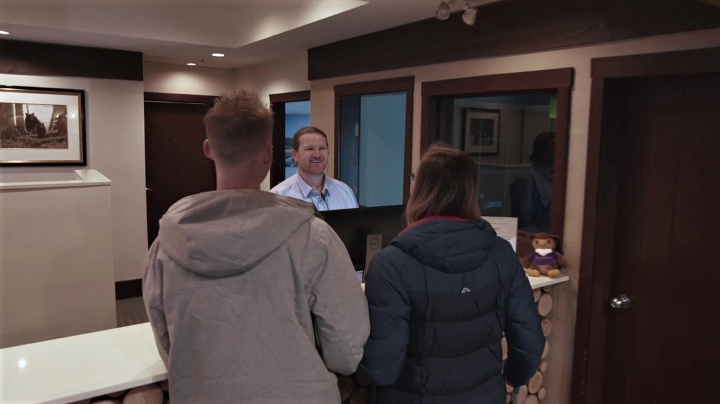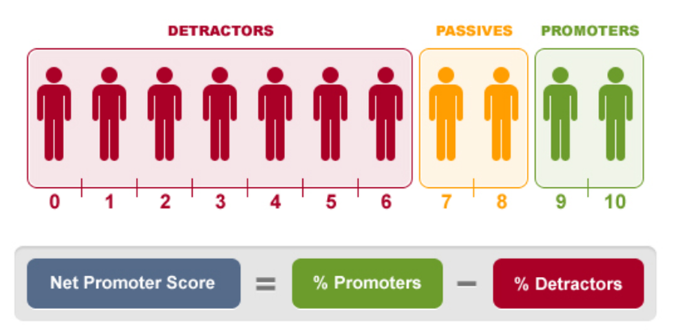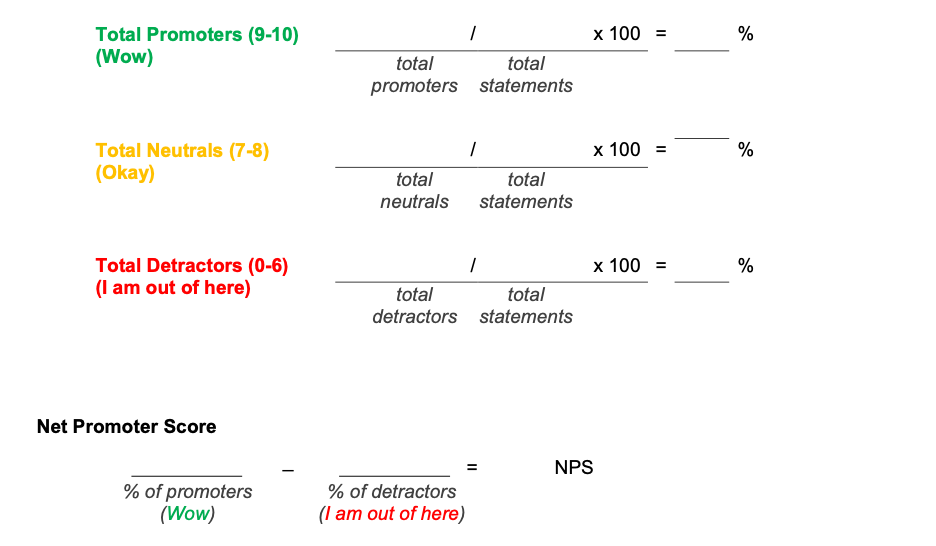47

Quality customer service is an experience of feeling valued or heard. Sometimes it’s an intangible component of why a guest may prefer one tourism or hospitality provider over another. There is something about quality customer service that you often can’t put your finger on — but you know it’s there. And it’s a critical factor for tourism success, both as a means of satisfying ever-increasing customer expectations, and as a way to achieve business profitability (Erdly & Kesterson-Townes, 2002).
In 2019, A Forbes article from Blake identified that, “Companies with a customer experience mindset drive revenue 4-8% higher than the rest of their industries. Two-thirds of companies compete on customer experience, up from just 36% in 2010” (Blake, 2019).
Industry Conversation: Ben Day, Director of Sales and Marketing, Blackcomb Springs Suites by Clique
In your own words, how you describe customer service?
Customer service for me is the discipline and some would say the art of the following…. Listening, Understanding, Delivering
- Listening: Find out by listening, asking questions and watching for non-verbal cues (i.e., body language) what kind of service your guest requires
- Understanding: Once you have absorbed the verbal and non-verbal cues, takes a moment to understand what it is that the guest really wants and anticipate additional touches that will go above and beyond.
- Delivering the service: The key to delivering great customer service is in the first two steps. By listening and understanding the guests you can anticipate the type of service that might just make a lasting impression. Sometimes great service is provided by empowering the guest to take action themselves, don’t assume your guest will want you to do everything for them. Some guest may prefer that you send them a link to a website or an app so that they research their options independently.
Training is critical to ensuring quality service and meeting these objectives (Brown et al., 2009). On a global scale, Canada ranks high in human resources capabilities. Unfortunately, due to the seasonal nature of many tourism and hospitality positions, and limited access to affordable and accessible training, the industry isn’t always able to take advantage of this position (Blanke & Chiesa, 2009), as it can be difficult to attract, train, and retain reliable and qualified staff year-round.
Spotlight On: Tourism HR Canada and go2HR
Tourism HR Canada is a pan-Canadian organization with a mandate aimed at building a world-leading tourism workforce. Tourism HR Canada facilitates, coordinates, and enables human resource development activities that support a globally competitive and sustainable industry and foster the development of a dynamic and resilient workforce. Tourism HR Canada has developed a number of programs and services to help students, employers and tourism workers. For more information go to the Tourism HR Canada website.
go2HR is BC’s tourism human resource association, responsible for playing a lead role in executing the BC Tourism Human Resources Strategy. Established in 1979, go2HR helps employers with their HR needs in areas such as occupational health & safety, customer service training, recruitment, retention and labour shortages, employment-related policy and legislation, and labour market research. go2HR also promotes jobs and careers in tourism, hosts the BC tourism job board and helps businesses provide remarkable customer experiences through its signature SuperHost suite of training (former WorldHost Training Services). For more information, visit the go2HR website.
The concept of total quality (TQ) refers to an approach by businesses to integrate all employees, from management to front-level, in a process of continuous learning, with a goal of increasing customer satisfaction. It involves examining all encounters and points of interaction with guests to identify points of improvement. Total quality management (TQM) in tourism and hospitality is a process where service expectations are created by the entire team, with a collaborative approach between management and employees (Kapiki, 2012).
Spotlight On Pacific Asia Travel Association (PATA)
Founded in 1951, the Pacific Asia Travel Association (PATA) is a not-for profit association that is internationally acclaimed for acting as a catalyst for the responsible development of travel and tourism to, from and within the Asia Pacific region. The Association provides aligned advocacy, insightful research and innovative events to its member organizations, comprising 95 government, state and city tourism bodies, 25 international airlines and airports, 108 hospitality organizations, 72 educational institutions, and hundreds of travel industry companies in Asia Pacific and beyond. See more on the PATA website.
Employers understand the positive impacts of training on their bottom line. Key benefits may include improved employee attraction/recruitment, retention, engagement, and innovation. Saunders (2009) suggests that to be most effective, training should be oriented to develop employee potential versus addressing deficiencies.Customer service training provides employees with a foundation for effective service delivery. Potential benefits of this training include:
- improved skills and attitudes
- better communication skills
- better understanding of workplace practices
- increased morale, confidence, self-satisfaction and work satisfaction
- increased participation
- greater job/career advancement potential
- greater interest in and willingness to participate in further training
- more independence (Grey, 2006).
As employees acquire certifications and credentials, and these are recognized by employers, both groups benefit. Employees have a tangible way of demonstrating mastery of service knowledge and skills, and employers have tools to assist with the recruitment and screening of potential staff.
Spotlight On SuperHost
SuperHost® is a suite of quality, affordable customer service training courses for front-line employees. Delivered online and in classroom, SuperHost offers relevant, up-to-date content and best practices that meet the current needs and expectations of employers and visitors. First launched in 1985, SuperHost is recognized as the standard for customer service excellence in BC. For more information, visit the SuperHost website.
Overview of Net Promoter Score
Net Promoter Score (NPS) is a method of calculating how customers are talking about your company and their willingness to recommend your organization to others. NPS breaks down customers into groups based on how they answer a question similar to this:
“On a scale of 1 to 10, how likely are you to recommend our company (or product) to a friend or colleague?”
Based on the score they give you, they are sorted into Detractors (scores of 1–6), Passives or Neutral (scores of 7–8), or Promoters (scores of 9–10). Detractors can harm businesses.
They are not only likely to not return, but they may also urge others to do the same (i.e., they will give bad reviews).
Passives are satisfied. Satisfaction is desirable of course, but passives may or may not come back to a business. Passives are not likely to go out of their way to recommend the business (and also likely won’t complete a review).
Promoters are very satisfied or delighted customers. They can help your business — they come back repeatedly and will recommend your business to others. These are the people who give you 4 or 5 star ratings!

To calculate the Net Promoter Score, which is an index ranging from −100 to +100, follow these steps:
- Break down the responses by Detractors, Passives, and Promoters
- Add up the total responses from each group
- To get the percentage, take the group total and divide it by the total number of survey responses (you might have received 100 responses)
- Now, subtract the percentage total of Detractors from the percentage total of Promoters — this is your NPS score (which is a numerical unit, i.e., 40, 50 or −20)
Most businesses are looking for a positive number — more promoters than detractors. (Example: If all of your scores would be promoters, you get a +100. If all of your scores would be detractors, you get a −100.)
Given the NPS range of −100 to +100, a “positive” score or NPS above 0 is considered “good”, +50 is “Excellent,” and above 70 is considered “world class.” Based on global NPS standards, any score above 0 would be considered “good.” This simply means that the majority of your customer base is more loyal.
Action/Goal: Once you know your Net Promoter Score, you can then make every effort to appease detractors and to create promoters. (go2HR, 2018, p. 16)

According to Kim (2008), customer-oriented interactions between consumers and tourism employees influence the quality of the tourism experience. Let’s take a closer look at the concept of customer orientation and what this means in today’s tourism businesses.
Recovery from Service Failures

If a business fails to meet customer expectations, there’s a risk the customer will tell others about it, often through social media networks. An on-location problem that turns into an online complaint, going from private to public, can become far more damaging to business than the original issue. To avoid any problem from escalating, organizations and staff must work hard to resolve issues before the customer walks out the door — or pulls out a smartphone to make an online posting.
Of course, it’s not always possible to resolve issues on the spot. A customer’s expectations may go beyond the service the business is able to provide, or staff might not be authorized by management to provide the means necessary to resolve the complaint. In these cases, staff must still step up as service professionals, realizing that the actions they take when faced with a complaint can have a significant impact.
Online complaints highlight this point; reviewers are often more upset about how a problem was handled than about the problem itself. As well, potential guests who read online complaints are looking for reassurance that the same thing won’t happen to them. If they don’t find it, they may dismiss the business as an option and move on. How a business respond to complaints, face-to-face and online, is critical to ensuring successful recovery from service failures.
Service recovery occurs when a customer service professional takes action that results in the customer being satisfied after a service failure has occurred. Often service failures are not the fault of front-line staff, and at times, may not even be the fault of the business. Failure may be the result of an error made by another employee, by the guest him- or herself, or by a technical error. Regardless of where the problem originated, when customers bring it to the attention of the staff, they have certain expectations for resolution.

Disappointed customers often want:
- An empathetic ear. Sometimes they simply want to vent. They want to know that the employee or manager is listening and cares.
- An apology. In some cases a sincere apology is enough.
- A solution. Typically customers bring issues to the attention of staff because they want them fixed.
- Compensation. Upset customers are looking for compensation, but not always.
- Follow-up. For some people, it’s important to know that their concerns are brought to the attention of management and are fixed for future customers.
- Reassurance. Customers want to know they’re in good hands.
Skilled service recovery is especially important in the age of social media. Customers who are active on social networks are likely to be equally vocal about their satisfaction with service recovery when a problem is expertly handled as they are with their displeasure when they are disappointed with service (WorldHost Training Services, 2013).
While service recovery is a critical skill, all tourism and hospitality professionals should approach each encounter with the goal of providing remarkable service. The next section explores how this is accomplished.
Long Descriptions
Figure 9.4 long description: Net Promoter Score scale. The scale shows 11 people in three different ranges.
The first seven people, numbered 0 to 6, are depicted in red and labelled detractors.
The next two, numbered 7 and 8, are depicted in yellow and labelled passives.
The final two, numbered 9 and 10, are depicted in green and labelled promoters.
The net promoter score formula is shown as the percentage of promoters minus the percentage of detractors.
Figure 9.5 long description: Formulas for calculating Net Promoter Score.
To calculate the percentage of customers who are detractors, who rate 0 to 6 (“I am out of here”), divide the total of detractors by the total of statements, then multiply by 100.
To calculate the percentage of customers who are neutrals, who rate 7 or 8 (“okay”), divide the total of neutrals by the total of statements, then multiply by 100.
To calculate the percentage of customers who are promoters, who rate 9 or 10 (“wow”), divide the total of promoters by the total of statements, then multiply by 100.
The Net Promoter Score can be found by subtracting the percentage of customers who are detractors from the percentage of customers who are promoters.

